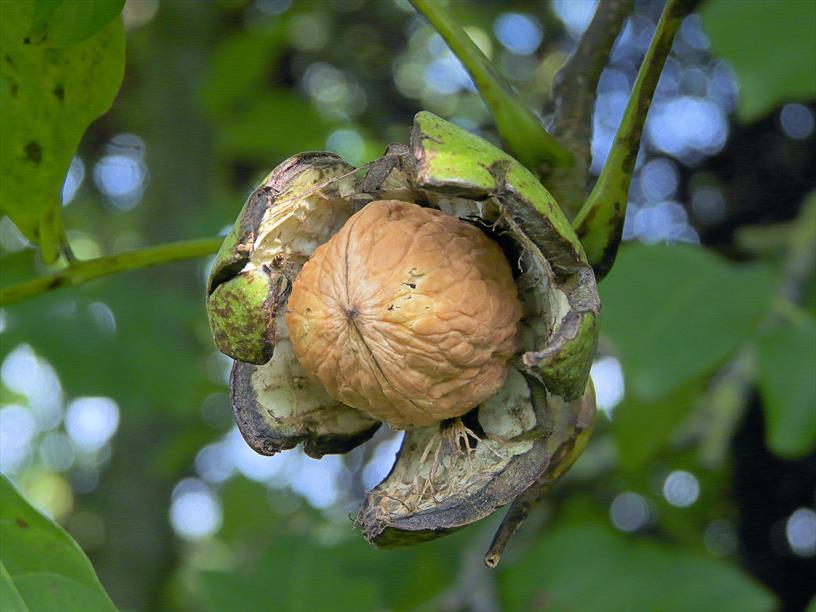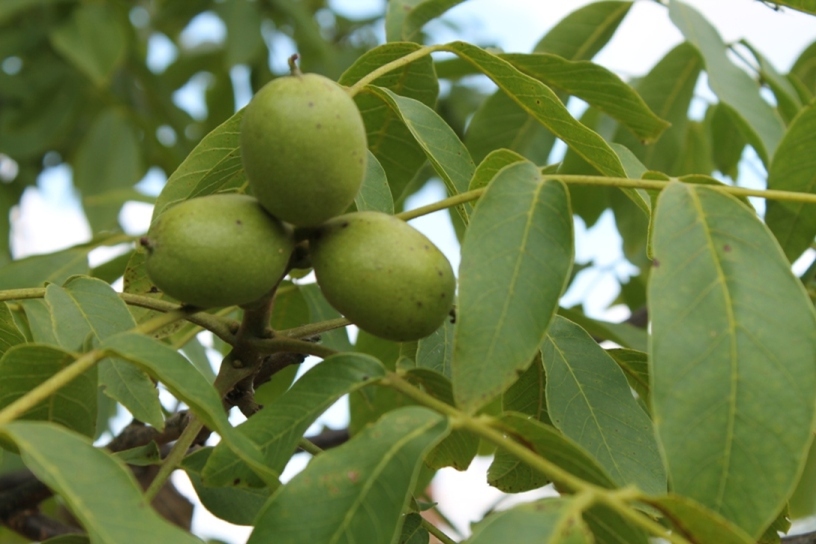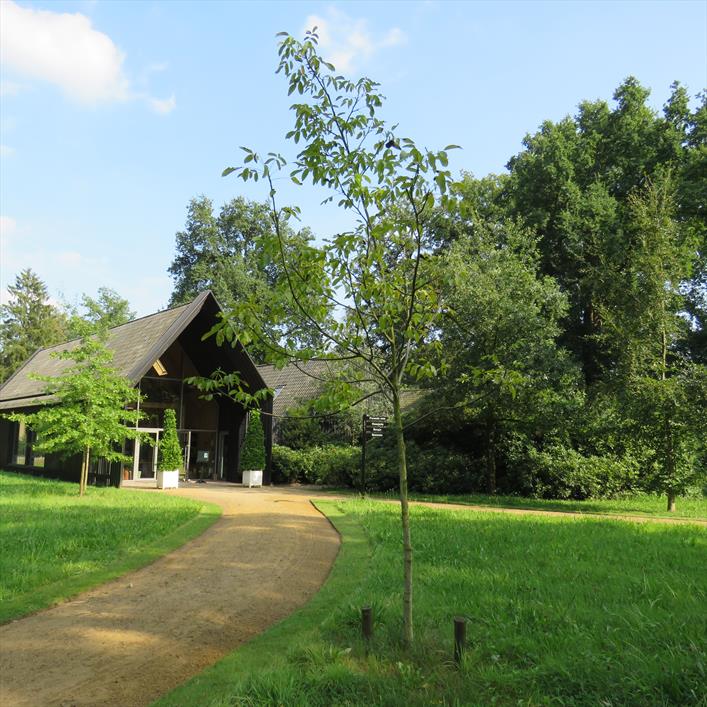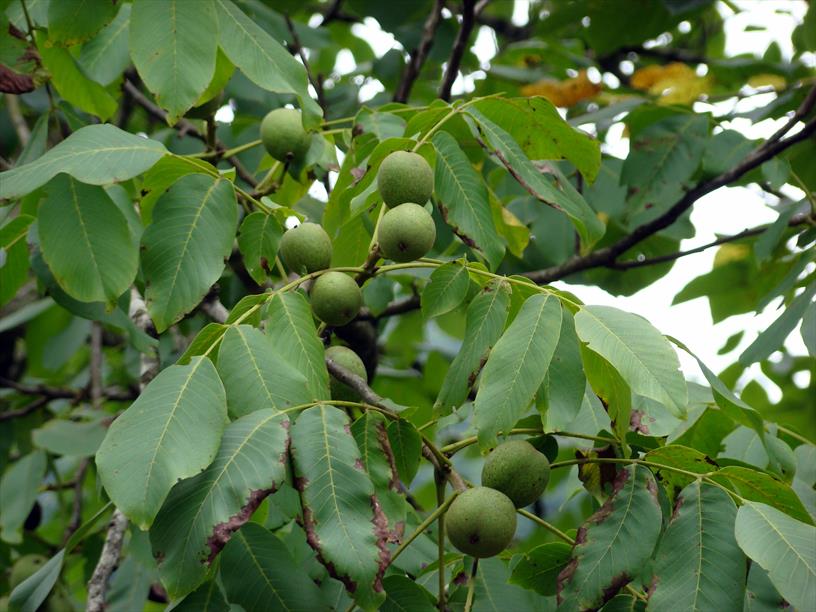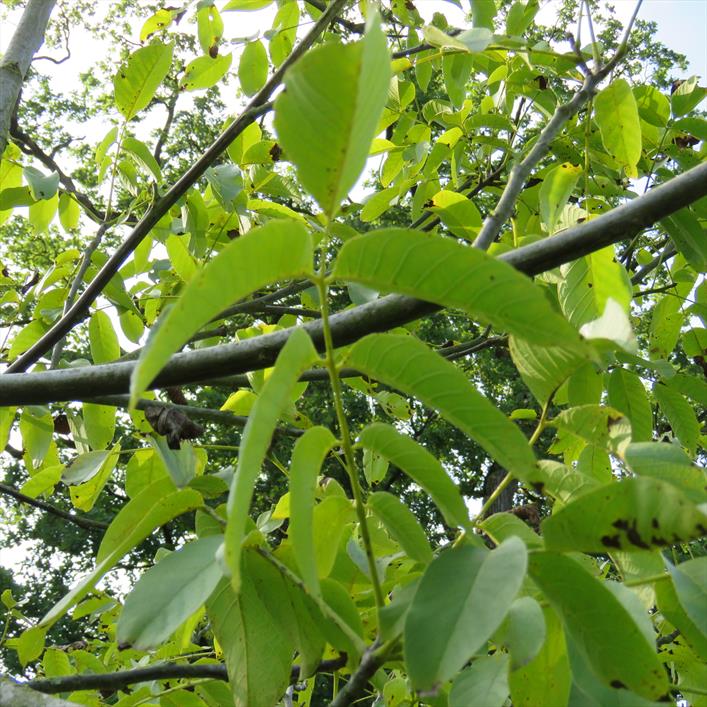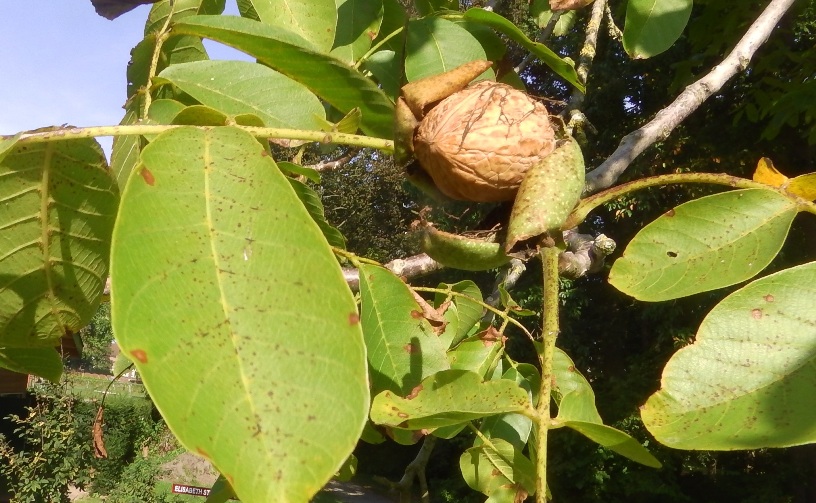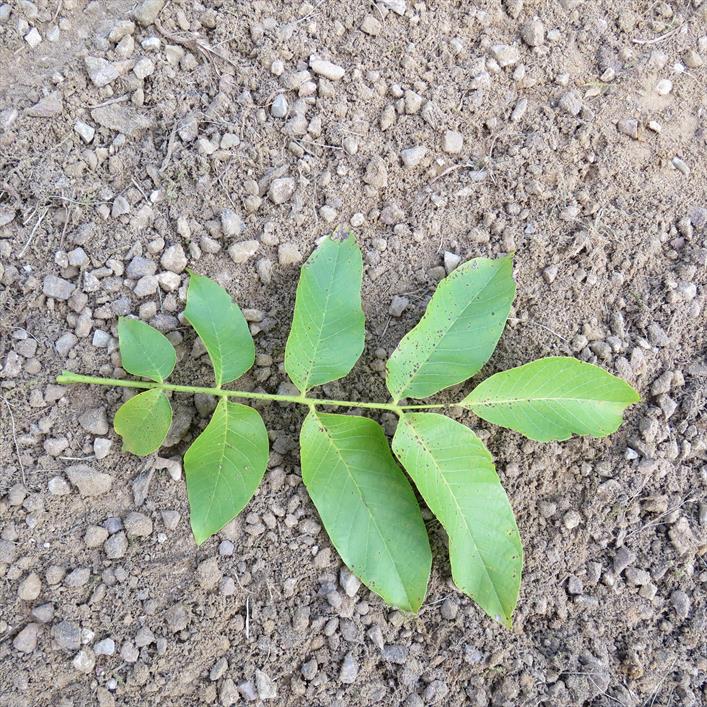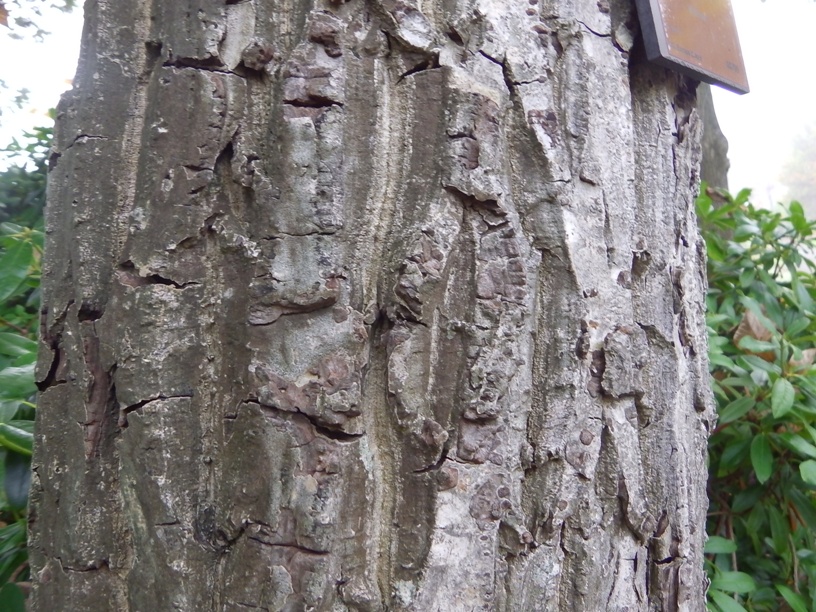(Common) Walnut
Juglans regia
Walnut family (Juglandaceae)
For its looks, nuts and wood
A graceful, strong tree with highly prized fruit. The walnut can reach heights of up to 30 m with a 10+ m round, broad crown. At maturity the silver-grey stem becomes deeply furrowed. Young branches are olive-brown, the older ones are a silver-grey. The male flowers appear in hanging catkins of 5 -10 cm in length. The female flowers sit in groups of 2 – 5. The outside of the husk is green with white speckles and inside sits a brown and lightly grooved nut. For centuries this species has also been planted for the economic value put on its easily worked wood. In warmer regions it can be cultivated on mountain slopes up to an altitude of 1800 m.
Read more.... »Themes
Crown jewel in the Historic Garden of Aalsmeer and Twickel Estate.
Juglans regia bears the highly rated edible fruit that we know as the walnut. Fallen nuts should be gathered immediately, cleaned and stored in the dry at a temperature of 7 oC or below, this way they can be kept for about one year.
This species has been cultivated for centuries for its nuts and also because of the economic value of its easily worked wood. In the Netherlands many walnut trees were felled during the First World War to make rifle butts for the Dutch army.
The native habitat of the walnut is in Central Asia from east Turkey to Xinjiang in China. Following the conquest of Alexander the Great in the 4th century BC it was introduced into Europe.
The husks are used to make the dye called 'nut brown' and is sold in tubes of self-tanning products and sunscreens.
The shape of the fruit resembles a human brain and therefore walnuts at the time of the doctrine of signatures was used to treat brain diseases. Moreover, the tough nut was seen as a bringer of fertility, because of its resemblance to a testicle.
The leaf of the walnut has many oil glands and the aroma that they release is a mosquito repellent.
Gewone walnoot was gewijd aan Jupiter. Oppergod van de Romeinen, god van het licht en de stralende hemel, wat Zeus was voor de Grieken.
Details
| Description: | Tree, up to 30 m, monoecious. |
|---|---|
| Distributions: | Central asia. |
| Habitat: | Moist, open soils, preferably calcareous with no standing water; intolerant of shade. |
| Year cycle: | Perennial (polycarpic decidous) |
| Hardiness: | -4 - 5 f (hardy - very cold winter) |
| Flowering period: | Mei - juni |
| Flower color: | Yellow, green |
| Notes on flowers: | Yellowish-green |
| Fruiting period: | September - oktober |
| Fruit color: | Other |
| Notes on fruits: | Green husk; beige nut |
| At its best: | April - oktober |
Sources
http://www.missouribotanicalgarden.org/PlantFinder/PlantFinderDetails.aspx?kempercode=a876,https://www.rhs.org.uk/plants/9504/i-Juglans-regia-i-(F)/Details,
Dendrologie van de Lage Landen - Jan de Koning en Wim van den Broek
